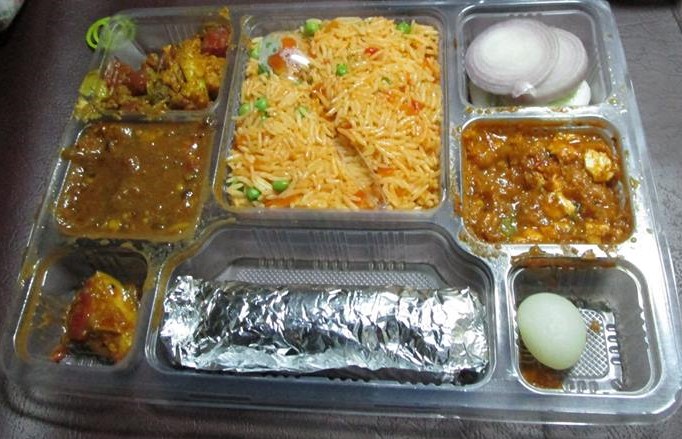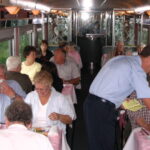Smarter Food Service for Amtrak.
by Matt Melzer
Dining by rail has always been an expensive, logistically complex endeavor, with heavy labor and supply costs not seen in normal restaurants. Amtrak’s periodic corner-cutting experiments have usually backfired and caused them to revert to the bedrock principle that food service is a loss leader that differentiates trains from other travel modes.
With that institutional knowledge out the door, Amtrak’s new airline-pedigreed management is taking literally the FAST Act authorization language that food service must soon break even, which is likely unviable (much like the charade of the Amtrak Reform and Accountability Act of 1997 in which management pretended to be on a legally mandated but ultimately ruinous “glidepath to self-sufficiency”). While a Congressional fix is needed to guide Amtrak on its overall strategic vision as well as smaller bits like food service, for now Amtrak should enact initiatives to reduce labor costs while simultaneously increasing the attractiveness of its food offerings.
* Offer hefty discounts for pre-ordering food items within one’s booking on the Amtrak site/app, and milder discounts and “virtual happy hours” for in-app ordering during the trip. This would increase engagement with the cafés and diners, reduce cash handling, quicken service, and make inventory more predictable.
* If fresh-cooked food is to be abolished, serve convection-oven heated meals and allow coach passengers to purchase them. Expand coach-centric meal offerings to increase diner revenue such as the “Just for You” menus which were recently abolished from Los Angeles hub trains (think sandwich+side+soda for $12).
* Create more flexibility in labor duties and space utilization between the café and dining cars. Amend labor contracts to compel on-board employees to work in both, allow passengers of all classes to dine in both, expand hours for both to be as broad as possible.
* Nix exclusivity with the catering supplier and test branded partnerships that have wide appeal and ease of serving on-board using existing employees. Panera Bread proves that fast-casual food can be tasty and relatively healthy.
* Empower on-board staff to hawk Amtrak Guest Rewards credit card applications with instant incentives like free drinks for the consumer and commission for the employee, and assign the lucrative card signup revenue to food service.

* Partner with delivery providers like GrubHub or UberEats to offer trainside restaurant catering at select stations, with a co-branded experience and revenue sharing between the parties. Indian Railways has its own delivery scheme in lieu of train-based diners, (photo above) and I found it both convenient and delicious.
Not all these ideas would pan out or make sense in every route’s context. Most of us who care about Amtrak’s long-term viability want to see the traditional dining car survive and thrive. But we must stay ahead of the curve and advocate that Congress stop micromanaging Amtrak at the product level, and that Amtrak stop dumbing down food service in a foolish bid to make it standalone-profitable. Instead there should be constant market-testing of new innovations and food service concepts that increase the overall marketability and attractiveness of train travel.




You know, Jim. What’s really annoying here is that no airline would ditch first class food because it wasn’t profitable. It’s how you sell the ticket in the first place. Congress has proven that it doesn’t know how to run a business long before now. Unfortunately, they seem to have found a meek and cowardly chief executive who doesn’t understand who his customer truly is. This is really going to suck….
Excellent point about airlines not demanding profit from food service in first class. You’re exactly right!